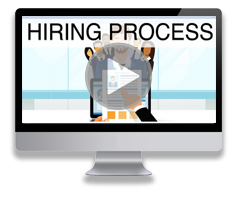So many more appointments would be set and so many more sales would be made if people would simply asks for the order. Unfortunately, most agents are afraid of the word no and as such, they simply don’t ask.
One of my favorite sayings is this: “If you don’t A-S-K, you don’t G-E-T.” In the world of setting appointments over the phone, your ISA must be able to control the conversation and direct it toward a natural end: closing for an appointment.
As part of directing the process over the phone, your ISA will likely need to employ trial closes, tie downs, and gaining agreements along the way so that asking for the appointment is as natural as it can be. To see a blog post we did about nailing the close go
to...www.insidesalespredictability.com/nailingtheclose.
Closing at the appropriate time(s) and using the appropriate verbiage is a must on a good sales call and fortunately, it is a skill that can be learned. Here are some tips your ISA can use to make sure they can thrive in the “deep end of the pool” when talking with prospects:
- Gaining commitments: According to sales training group The Sales Board, 62 percent of salespeople fail to ask for a commitment when making a sale or setting up an appointment. This can be devastating when you consider how much money, time, and energy a real estate agent/business owner invests into even just one sale. Neither you nor your ISA can afford to navigate a sales call or presentation without gaining commitments along the way. You can gain commitments by asking for the order (cutting to the chase only after you have rapport), summarizing the benefits of your offer, offering options or choices, and/or offering special features. The strategy you use will be predicated on your relationship with the seller prospect and what feels natural at the time based upon his/her goals.
- Tie downs: When you confuse your prospects, you often lose them. And when you’ve lost them, it’s hard to get them back. Keeping your prospects on board and making sure they stay on board can be done easily by using tie downs. Tie downs are small questions that you use to confirm that your prospect got your point and agrees with it. Essentially, they are used to help you create and then maintain “Yes” momentum during your presentation over the phone or face to face.
For example: “If you’re going to get top dollar for your home, it makes sense to hire an agent who sells his clients’ homes for 100 percent of asking price, doesn’t it?” “Doesn’t it” is the tie down here and it elicits the “Yes” you’re looking for to keep the seller prospect on your side. Like any tactic or strategy you use in your sales presentations or calls, using too many tie downs can become annoying and off-putting. Try to use them sparingly and only when they make sense.
- Trial closes: A trial close is a smaller, less-threatening close that lets you know whether or not the prospect is ready for you to close. Trial closes are like gaining commitments in that you would use them to put yourself in position to close for an appointment or a sale. The difference, though, is that trial closes are formulated as questions.
For example, let’s say you are looking to buy a smartphone. The salesperson greets you, finds out what kind of phone you’re looking for and then takes you through a demo of all the bells and whistles the phone has to offer. At one point during the demo, she finds out you love to download music and points out how fast the processor is in getting music onto your phone. When she’s done showing you this feature, she asks a simple question: “What do you think about the speed of the processor on this phone?” That’s a simple, but effective, trial close. She’s not asking you to buy the phone, she’s just checking in to see if you like one of its features.
Properly executed, these softer closes will put your ISA in position to close in a natural (and not pushy) manner to get you a legitimate listing appointment. And, while there are many ways to close effectively for an appointment, we like this one because it’s all encompassing and ensures that your prospect knows why you’re coming to see them:
When would be a good time for [name] to come take a look at your home and provide you with the value of your home? While [name] is there, he can tell you what to do, and more importantly, what not to do to get the most amount of money for your home. At the same time, he can go over the fees and expenses to getting your home sold so you know exactly what you’ll walk away with at closing.
It’s simple, straightforward, and most importantly, it lets your seller prospects know that you can do everything for them that they would want as a result of a visit from a real estate agent. Now, it doesn’t guarantee that you’ll show up and the seller will drop to their knees and beg you to list their home. What it does do, though, is put you in the best position to provide the seller with the information they need to decide if you’re the agent for the job.

.jpg)










